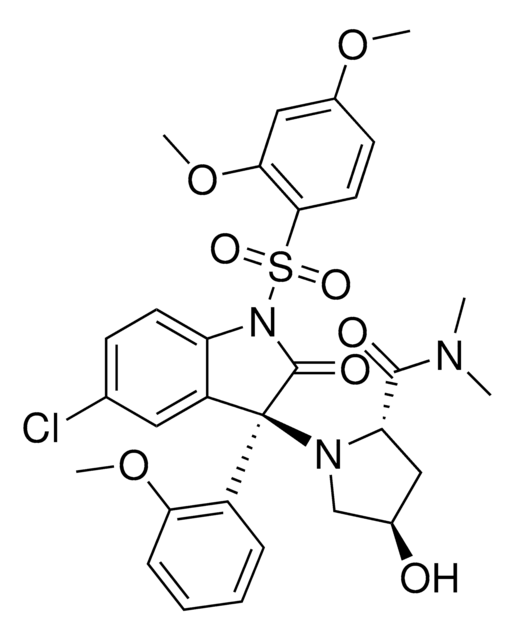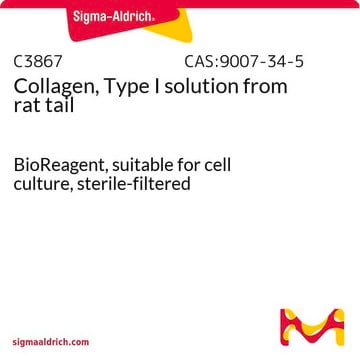V1880
[deamino-Pen1, O-Me-Tyr2, Arg8]-Vasopressin
≥97% (HPLC)
About This Item
Productos recomendados
sterility
non-sterile
assay
≥97% (HPLC)
form
powder
solubility
water: 0.5 mg/mL, clear, colorless
shipped in
ambient
storage temp.
−20°C
SMILES string
COc1ccc(CC2NC(=O)CC(C)(C)SSCC(NC(=O)C(CC(N)=O)NC(=O)C(CCC(N)=O)NC(=O)C(Cc3ccccc3)NC2=O)C(=O)N4CCCC4C(=O)NC(CCCNC(N)=N)C(=O)NCC(N)=O)cc1
InChI
1S/C49H70N14O12S2/c1-49(2)24-40(67)57-32(22-28-13-15-29(75-3)16-14-28)43(70)60-33(21-27-9-5-4-6-10-27)44(71)58-31(17-18-37(50)64)42(69)61-34(23-38(51)65)45(72)62-35(26-76-77-49)47(74)63-20-8-12-36(63)46(73)59-30(11-7-19-55-48(53)54)41(68)56-25-39(52)66/h4-6,9-10,13-16,30-36H,7-8,11-12,17-26H2,1-3H3,(H2,50,64)(H2,51,65)(H2,52,66)(H,56,68)(H,57,67)(H,58,71)(H,59,73)(H,60,70)(H,61,69)(H,62,72)(H4,53,54,55)
InChI key
HNOGCDKPALYUIG-UHFFFAOYSA-N
Gene Information
human ... AVPI1(60370)
mouse ... AVPI1(69534)
rat ... AVPI1(171386) , LOC689723(689723)
Amino Acid Sequence
Application
Biochem/physiol Actions
Preparation Note
signalword
Warning
hcodes
Hazard Classifications
Acute Tox. 4 Inhalation
Storage Class
11 - Combustible Solids
wgk_germany
WGK 3
ppe
dust mask type N95 (US), Eyeshields, Gloves
Elija entre una de las versiones más recientes:
¿Ya tiene este producto?
Encuentre la documentación para los productos que ha comprado recientemente en la Biblioteca de documentos.
Active Filters
Nuestro equipo de científicos tiene experiencia en todas las áreas de investigación: Ciencias de la vida, Ciencia de los materiales, Síntesis química, Cromatografía, Analítica y muchas otras.
Póngase en contacto con el Servicio técnico
![[Arg8]-Vasopressin acetate salt ≥95% (HPLC)](/deepweb/assets/sigmaaldrich/product/structures/282/717/a4c16d4f-e168-4d84-a0e3-59de3e06251e/640/a4c16d4f-e168-4d84-a0e3-59de3e06251e.png)

![[deamino-Cys1, Val4, D-Arg8]-Vasopressin ≥95%](/deepweb/assets/sigmaaldrich/product/structures/242/492/d66f6a61-e108-4db6-b155-90a4b56d99fc/640/d66f6a61-e108-4db6-b155-90a4b56d99fc.png)




![[deamino-Cys1, D-Arg8]-Vasopressin acetate salt hydrate ≥95% (HPLC)](/deepweb/assets/sigmaaldrich/product/structures/215/222/82da3633-80ea-463d-8b55-e99fb8e442e0/640/82da3633-80ea-463d-8b55-e99fb8e442e0.png)

